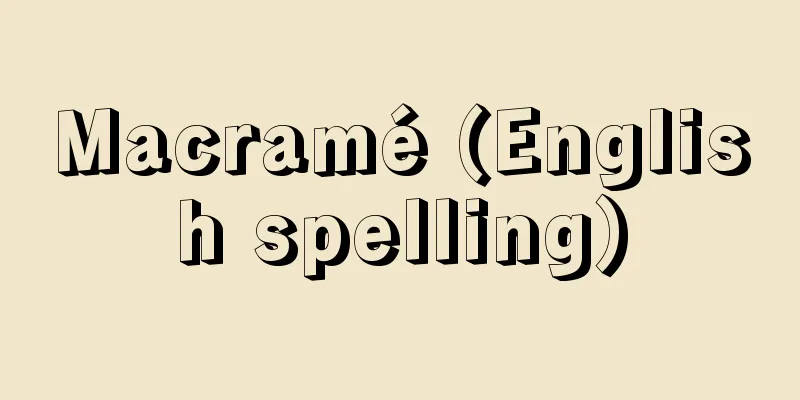Real Estate - Fudosan

|
Land and its fixtures (Civil Code, Article 86, Paragraph 1). Along with movable property, this is a concept that constitutes "things." Land includes the soil, sand, rocks, and stones that are part of it. Fixtures are objects that are continuously attached to the land, and include buildings, trees, bridges, and stone walls. Fixtures are generally treated as part of the land and are not considered independent real estate, but there are exceptions, such as the following: (1) Buildings Buildings are treated as separate real estate independent of the land (Real Estate Registration Act, Article 2, Paragraph 1). (2) Trees A group of trees becomes independent real estate by registering them under the "Law Concerning Standing Trees" (Same Act, Article 2, Paragraph 1). In addition, even if they are not registered under the same law, case law has recognized that trees can be treated as real estate independent of the land if a so-called identification method, such as putting up a sign, is used. Real estate is often treated differently from movable property under the law. First, because real estate has a fixed location, the registration system has long been developed as a method of public notice, and changes in rights cannot be asserted against third parties unless they are registered (Civil Code, Article 177). In contrast, the transfer of real rights over movable property cannot be asserted against third parties unless the movable property is handed over (Civil Code, Article 178). Second, because real estate accounted for the majority of the total assets belonging to individuals or families before the modern era, it is generally considered to have a higher financial value than movable property and has been treated more strictly than movable property. Furthermore, compulsory execution is also carried out through careful procedures (Civil Execution Act, Articles 43 and following). [Yasuyuki Takahashi and Masamitsu Nozawa] [Reference] | |Source: Shogakukan Encyclopedia Nipponica About Encyclopedia Nipponica Information | Legend |
|
土地およびその定着物(民法86条1項)。動産とともに「物」を構成する概念である。土地には、その構成部分たる地中の土砂岩石なども含まれる。定着物とは継続的に土地に付着された物で、建物・樹木・橋・石垣などがこれに属する。定着物は原則として土地の一部として取り扱われ、独立の不動産とはならないが、次のような例外がある。(1)建物 建物は土地から独立した別個の不動産として取り扱われる(不動産登記法2条1号)。(2)樹木 樹木の集団は、「立木(りゅうぼく)ニ関スル法律」による登記をすることによって独立の不動産となる(同法2条1項)。また、同法による登記をしていない場合にも、標識を立てるなどのいわゆる明認方法が施されると、樹木は土地から独立した不動産として取り扱われることが判例法上認められている。 不動産は動産とは異なった法律的取扱いを受けることが多い。まず、不動産はその所在が一定していることから、古くから公示方法として登記制度が発達しており、その権利の変動は登記をしなければ第三者に対抗できない(民法177条)。これに対して動産に関する物権の譲渡は、その動産の引渡しがなければ、第三者に対抗することができない(同法178条)。次に、不動産は近代以前には個人あるいは家族に属する総財産の大部分を占めていたことから、一般に動産よりも財産的価値が高いと考えられ、動産に比べて厳重な取扱いを受けてきている。また、強制執行も慎重な手続を経て行われる仕組みになっている(民事執行法43条以下)。 [高橋康之・野澤正充] [参照項目] | |出典 小学館 日本大百科全書(ニッポニカ)日本大百科全書(ニッポニカ)について 情報 | 凡例 |
<<: Real estate appraiser - Fudosankanteishi
Recommend
Reinwart, KGK (English spelling)
…It was introduced to Japan in the early Meiji pe...
Bar Association - Bengo Shikai
Considering the mission and duties of lawyers, in...
Rockford
Located in northern Illinois, USA, on the Rock Ri...
《Blätter für die Kunst》 (English notation) Blatterfurdie Kunst
…In the early 1890s in Germany, a circle of poets...
Majuro Island (English spelling)
An atoll in the southeast of the Republic of the M...
Memories - Omoide no Ki
A full-length novel by Tokutomi Roka. It was seri...
Erfurt (English spelling)
The capital of the state of Thuringia in central G...
Shima Sakon
? -1600 (Keicho 5) A military commander during the...
Church of the Nativity
Founded in Bethlehem around 330 by Emperor Constan...
Theory of Ideals - Idealron
…In the ring of algebraic integers, the uniquenes...
Exhaust turbine - exhaust turbine
This refers to a gas turbine that runs on the exha...
Storytelling Monk - Storytelling
A recluse with a keen eye who made a living tellin...
Sea and mountain
〘Noun〙① Sea and mountain. Sea and mountain. ※Man&#...
Ear discharge - Ear discharge
Ear discharge is a condition in which a discharge ...
sorocarp
…Amoebae multiply by division, and under suitable...






![Inasa [town] - Inasa](/upload/images/67caefa77eaed.webp)


